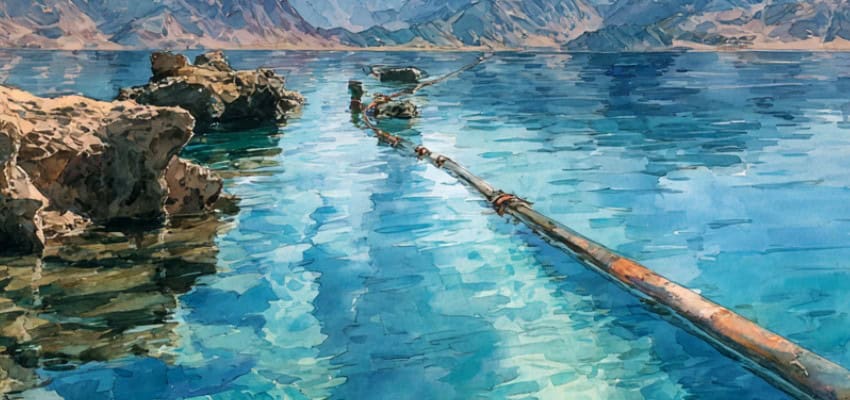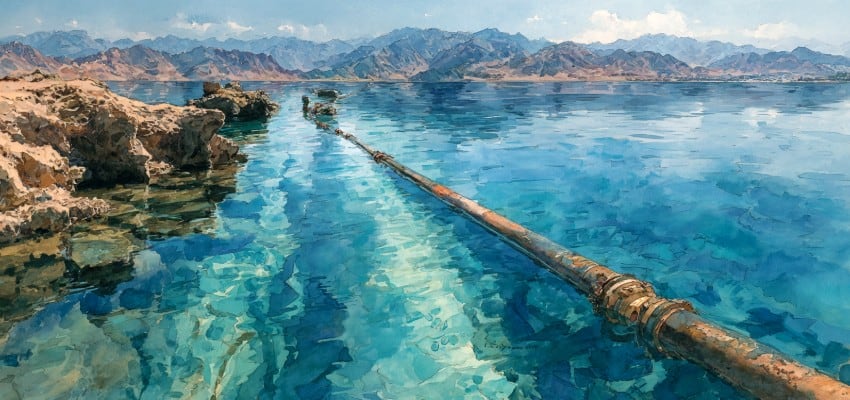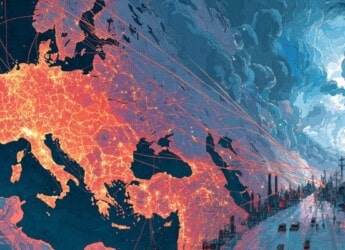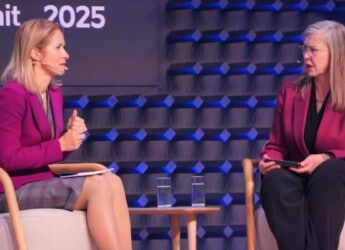Editor’s Note: On September 6, 2025, submarine cables in the Red Sea were cut near Jeddah, Saudi Arabia, resulting in a disruption of connectivity across Asia and the Middle East. The damage to SMW4 and IMEWE impacted internet services in India, Pakistan, and the United Arab Emirates. Meanwhile, Microsoft Azure users experienced higher latency until the rerouting of traffic was stabilized the following day. Although cloud services were quickly restored, the physical cable repairs are expected to take weeks or months. The incident highlights the Red Sea’s vulnerability as a global chokepoint and reinforces recent warnings from the Insikt Group about increasing threats to submarine infrastructure and limited global repair capacity.
Content Assessment: Red Sea Cable Cuts Disrupt Connectivity and Expose Global Infrastructure Risks
Information - 93%
Insight - 92%
Relevance - 91%
Objectivity - 93%
Authority - 90%
92%
Excellent
A short percentage-based assessment of the qualitative benefit expressed as a percentage of positive reception of the recent article from ComplexDiscovery OÜ titled, "Red Sea Cable Cuts Disrupt Connectivity and Expose Global Infrastructure Risks."
Industry News – Cybersecurity Beat
Red Sea Cable Cuts Disrupt Connectivity and Expose Global Infrastructure Risks
ComplexDiscovery Staff
On September 6, 2025, multiple submarine cables in the Red Sea were severed near Jeddah, Saudi Arabia, triggering widespread internet disruptions across Asia and the Middle East. The damage affected two of the region’s most critical systems, the Southeast Asia–Middle East–Western Europe 4 (SMW4) operated by Tata Communications and the India–Middle East–Western Europe (IMEWE) system managed by an Alcatel-Lucent consortium. Together, these cables carry a substantial portion of the world’s traffic between continents, forming part of the global backbone that enables digital connectivity.
The cuts resulted in degraded internet performance in India, Pakistan, and the United Arab Emirates, where users on national networks, such as Du and Etisalat, reported slower speeds and intermittent access. Network monitoring confirmed reduced connectivity, while Microsoft acknowledged increased latency for its Azure cloud platform, the world’s second largest. Although traffic outside the Middle Eastern corridor remained unaffected, Azure users experienced rerouting delays. Microsoft restored Azure services by the evening of September 7 through alternate pathways, but it also noted that repairs to the physical infrastructure would take considerably longer. No specific completion date has been announced, and industry experience suggests that complete restoration could take weeks or months.
The Red Sea has long been recognized as a chokepoint for global telecommunications. Its narrow waterway funnels numerous cables through concentrated maritime passages, creating points of failure where localized damage can ripple across multiple systems. A similar vulnerability was revealed in February 2024, when the UK-owned vessel Rubymar, struck by a Houthi missile, drifted with its anchor deployed and damaged three major cables—the Asia-Africa-Europe 1 (AAE-1), the Europe India Gateway (EIG), and SEACOM. That event disrupted nearly 25 percent of internet traffic between Asia, Europe, and the Middle East, illustrating how a single incident can have a widespread impact. The September 2025 cuts highlight the persistence of this structural weakness, where geographic concentration magnifies the effects of both accidental and intentional damage.
While the cause of the latest incident remains under investigation, it occurred in an environment of heightened geopolitical tension. The Red Sea has been a focal point of conflict and disruption in recent years, particularly as Houthi forces have intensified maritime activity. Although the group has denied involvement in previous cable cuts, its operations have raised persistent concerns about the intentional targeting of telecommunications infrastructure. Beyond the immediate region, security analysts have documented a growing number of incidents worldwide in which submarine cables appear vulnerable to covert interference.
Recent research from the Insikt Group reinforces this broader perspective. Between 2024 and mid-2025, the organization recorded 44 cable damage events across 32 locations. While nearly a third of these incidents were attributed to unknown causes, about a quarter were linked to anchor dragging, some of which involved vessels associated with Russian and Chinese interests. Analysts have warned that such activity may be part of hybrid warfare strategies, providing adversaries with plausible deniability while disrupting global communications. The report also highlighted how cable damage has increasingly become entangled with geopolitical maneuvering, as states recognize the leverage that control over digital infrastructure can provide.
Repairing undersea cables is neither quick nor straightforward. Insikt Group notes that the median restoration time is around forty days, though complications such as conflict zones or delays in obtaining permits can extend this period considerably. Specialized repair ships are limited in number and geographically dispersed, and in some cases, operators face restrictions on insurance or access when attempting to work in unstable regions. These constraints underline a systemic challenge: as global reliance on high-capacity connectivity increases, the ability to repair and restore that infrastructure has not expanded at the same pace. In response, several governments have begun to consider sovereign repair fleets or subsidies to strengthen national and regional resilience.
Despite these challenges, the September 2025 incident illustrates the adaptive resilience of the modern internet. Service providers rapidly rerouted traffic through alternate pathways, maintaining continuity even as users experienced slower speeds and higher latency. Cloud operators communicated transparently about the scope of the impact, underscoring the importance of built-in redundancy across global networks. Yet the event makes clear that redundancy alone cannot eliminate the strategic vulnerabilities created by concentrated chokepoints and limited repair capacity.
For cybersecurity, governance, and eDiscovery professionals, the Red Sea cable cuts serve as a poignant reminder that physical infrastructure is inextricably linked to digital resilience. Disruptions to subsea systems can delay access to critical data, complicate legal discovery timelines, and create broader governance challenges for organizations dependent on seamless connectivity. As cross-border data flows and cloud computing continue to expand, planning for these risks becomes essential. Organizations may need to account for prolonged outages in their continuity frameworks, invest in diversified connectivity, and engage in policy discussions that support investment in infrastructure security.
The September 2025 incident reinforces a dual reality. On one hand, global networks have demonstrated an ability to withstand sudden shocks through rerouting and redundancy. On the other hand, the geographic concentration of submarine cables in fragile corridors, such as the Red Sea, leaves millions of users vulnerable to service degradation in the event of accidents or hostile actions. Combined with mounting evidence of state-linked interference and constrained repair capacity, the cuts near Jeddah underscore the urgent need to view submarine cable security not as a peripheral concern but as a central component of cybersecurity and information governance strategies worldwide.
News Sources
- Undersea cables cut in the Red Sea, disrupting internet access in Asia and the Mideast (Associated Press)
- Microsoft Azure services disrupted by Red Sea cable cuts (BBC)
- Red Sea cable cuts disrupt internet across Asia and the Middle East (Reuters)
- Internet disruptions in Middle East and South Asia after Red Sea cable cuts (Al Jazeera)
- Microsoft says Azure affected after cables cut in the Red Sea (TechCrunch)
- Internet access in Middle East and Asia disrupted after ‘undersea cables cut’ (Sky News)
- Undersea cables cut in Red Sea, internet disrupted in Asia and the Mideast (ABC News)
- Submarine Cable Security at Risk Amid Geopolitical Tensions & Limited Repair Capabilities (Insikt Group)
Assisted by GAI and LLM Technologies
Additional Reading
- A Walk Through History: The Churchill War Rooms and the Power of Resilience
- The Architecture of Isolation: Cold War Cities and Corporate Silos
- Castles, Borders, and the Battle for Cyberspace
Source: ComplexDiscovery OÜ

























